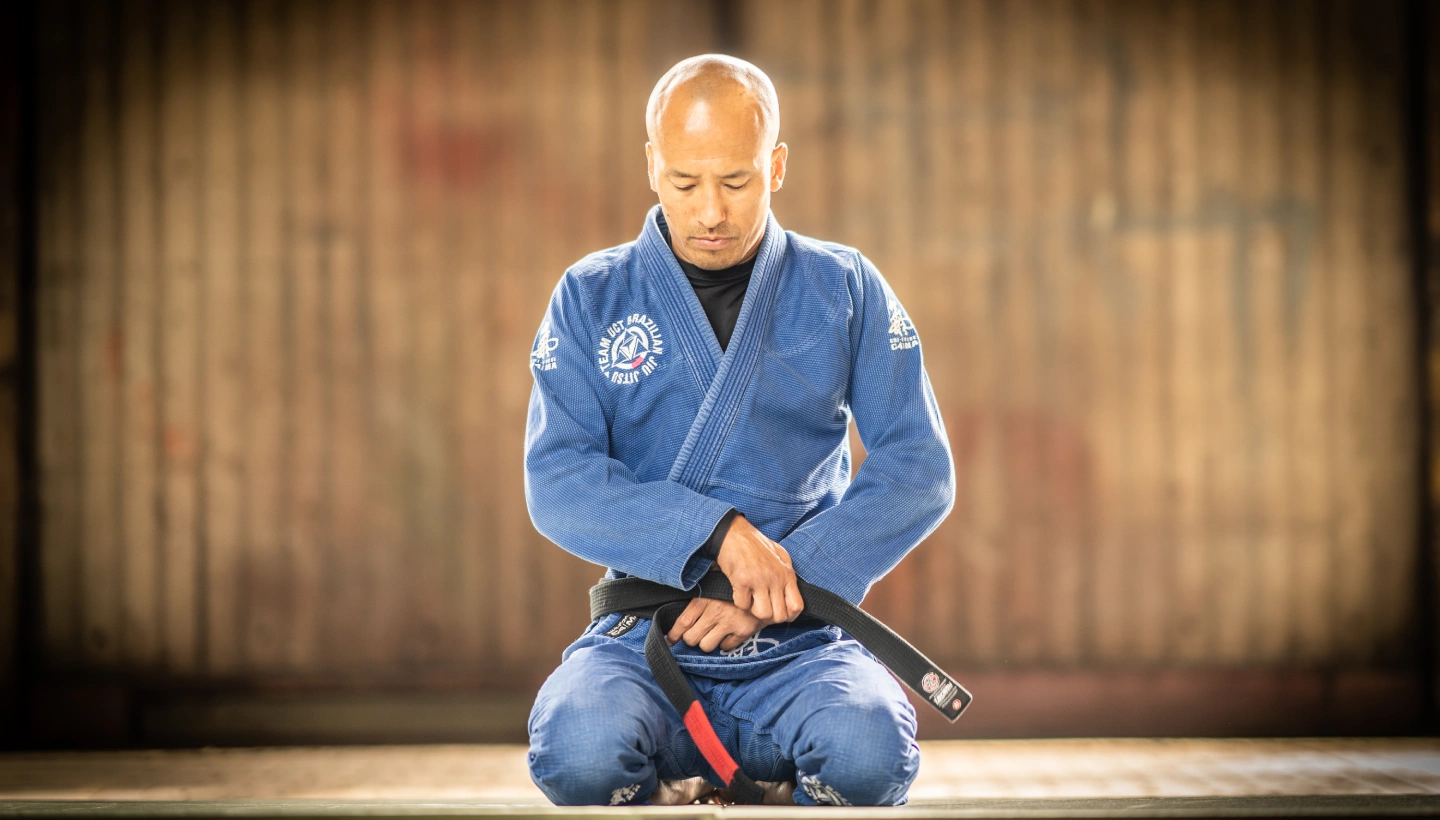Brazilians Jiu Jitsu grading system
The grading system of Brazilian Ju-Jutsu is a way to indicate the level of technical knowledge and practical skills of the Brazilian Ju-Jutsu practitioner. The structure of the grading system is very similar to that of other martial arts such as Karate and Judo, but in Brazilian Ju-Jutsu there are unique aspects and specific themes to each belt. In general, the criteria for obtaining a belt is loosely interpreted by most Brazilian Jiu Jitsu schools. Within UCT International there are specific criteria for the belts that have been fine-tuned by the instructors in charge of Team UCT.
White belt
The white belt is the belt that every student begins with during their journey to black belt in Brazilian Jiu Jitsu. During the period that the student wears his white belt, the main focus is on defending and escaping from inferior positions during sparring matches.
Before the student receives his blue belt, he should also recognize different positions. Both defensive and offensive positions. The duration that a student must wear his white belt depends on the time spent attending classes and how talented the student is. On average, this white belt period lasts about three years.

Purple belt
During the purple belt period, the key is to refine the techniques learned up to that point. A purple belt is also expected, as part of self-improvement, to assist in teaching. A purple belt is also qualified to teach independently. During the purple belt period the student will also see his strong (favorite) side and consequently recognize his weaknesses. On average this period lasts two years, as indicated, taking into account the invested training time.

Brown belt
For the minimum period of 1 year (according to IBJJF regulations) the student should wear his brown belt, the last hurdle to the final black belt. This period is used to improve the weak links in your ‘game’ and to refine your strong points of your ‘game’. According to the rules of the IBJJF a student must be at least 18 years old to obtain his brown belt.

Black belt
To achieve your black belt you need to have a high technical knowledge of the Jiu Jitsu system and outstanding practical skills. A black bander must have spent hundreds of hours on the mat. It must be clear to an outsider that the black belt is an expert in Brazilian Jiu Jitsu.
Within IBJJF rules, a black bander must have had his belt for at least three years before receiving his first dan degree. This requires additional qualifications such as a referee certificate from the IBJJF.

Black | Red belt
When a black bander reaches the seventh dan he or she receives the ‘Coral’band. This is black | red. To get this band you have been black belt for years and at an exceptionally high level in terms of knowledge and skills.

White | Red belt
When the ‘Master’ (Black | Red belt) has given at least 10 years of Jiu Jitsu as a bearer of the ‘Coral’ belt then he / she is eligible for the white | red belt. This coincides with the 8th dan degree in Brazilian Jiu Jitsu.
Red belt
When this degree is awarded the ‘Grand-Master’ has had his black belt for over 50 years and has had an undeniable influence on the development of contemporary Brazilian Jiu Jitsu. On the photo one of the few still living ‘Grand-Masters’ Flavio Behring.

Exam criteria
During the exam days the students who are going to practice for their new belt are asked to demonstrate a number of techniques whereby attention is paid to the execution, the understanding of the techniques and the execution of knowledge during the sparring part of the exam.
Each candidate is assessed individually, taking into account the possible limitations of the student. The final criteria are based on the personal growth of knowledge and skills and not on how often the student wins or knocks down other students.
Brazilians Jiu Jitsu matches
Is it a “must” to participate in contests to get a next belt? Although we do advise students to participate a number of times in BJJ competitions, it is not a requirement with regard to obtaining a new belt. Technical knowledge and passion in the perception of Brazilian Jiu Jitsu are important.
Stripes | Slips | Exam set-up
During the exam days, a topic is always covered. This can be conceptual, this can be a specific guard or just focused on submissions. But it is always instructive and another learning moment in the BJJ process of the student. Before the seminar (topic etc.) part begins, those going for a belt are tested on their technical knowledge. After the entire process, not only are the bands then awarded but also ‘slips'(stripes on the band) are awarded. These are based on ‘attendance’, ‘technical skills’, ‘race result’ and ‘talent’ during previous periods.
UCT Pasport
At UCT International, all students receive what is called a UCT Passport. In this passport the student can keep track of his or her progress in Brazilian Jiu Jitsu. Membership at UCT International means that you get discounts on seminars and in some cases also on clothing.
















